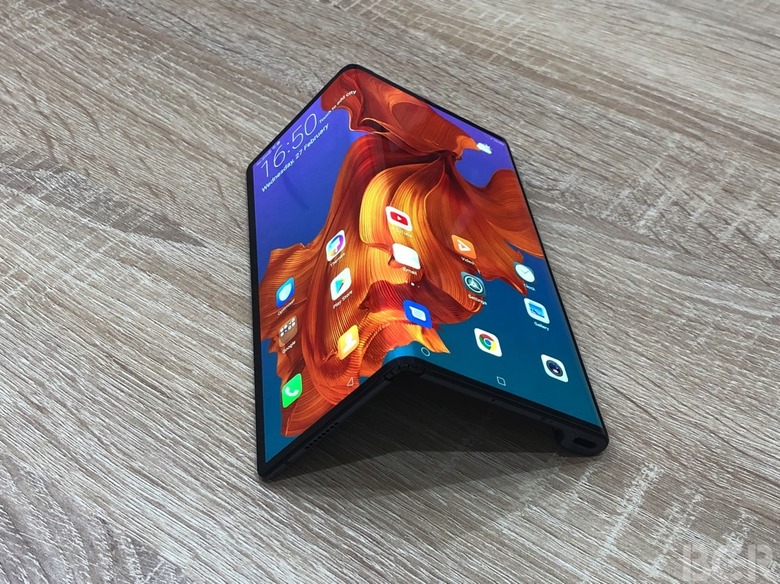Hands-On With The Huawei Mate X, The Best Foldable Phone So Far
The best-looking foldable smartphone ever made was unveiled in Barcelona a few days ago, well before the Huawei's press conference. Images of the Mate X were accidentally leaked, teasing a fantastic design that already looked better than what Samsung did with the Galaxy Fold. I had a chance to see the smartphones during a briefing before Huawei's press conference, but that turned out to be an eyes only experience. It seemed like Huawei wasn't ready to let anyone touch the prototype it brought to the Mobile World Congress. That changed today as I finally got a chance to use the new smartphone, and I have to say I'm now completely sold on the benefits of foldables.
Phones with foldable screens are finally here, and while they're still in their infancy, they're finally ready to hit stores. Devices like the Galaxy Fold and Huawei Mate X will be incredibly expensive at first, and many people will argue there's no need for such contraptions. But let me tell you this: The moment you touch it, it becomes clear that foldable phones are awesome.
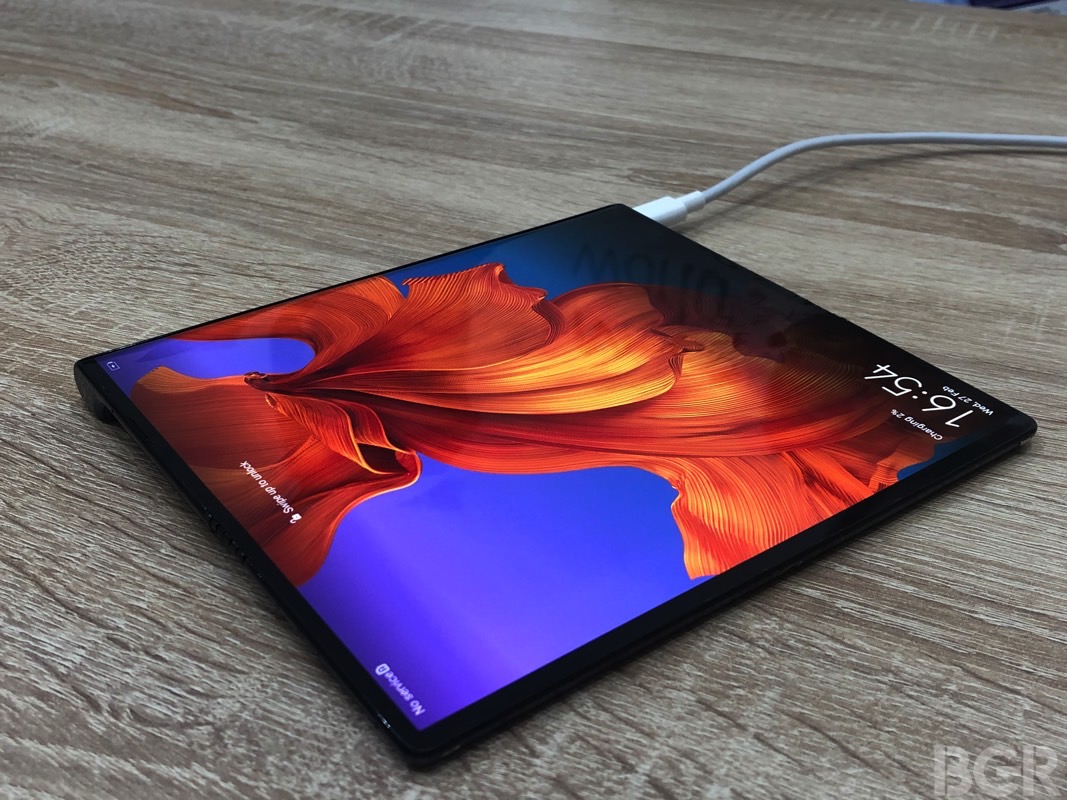
In tablet mode, the gorgeous display looks amazing. It's an all-screen device with no notch and no camera hole, just 8 inches of edge-to-edge display. It's a tablet you can pocket that can run between two and four apps side-by-side. And Google, I was told, is also involved in optimizing the multi-app experience.
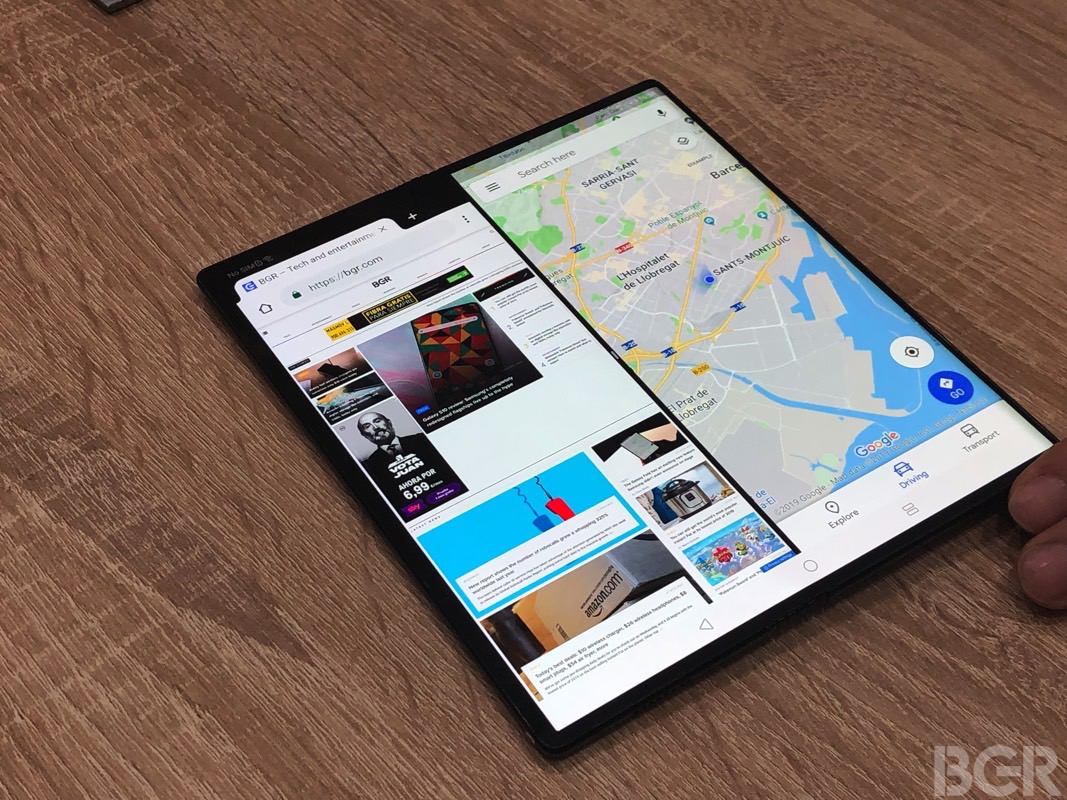
Content looks excellent even if the aspect ratio of the 8-inch OLED screen is a bit unusual at 8:7.1. Games look great too, and video looks exactly like what you would expect from video on an Android tablet. The same goes for browsing the web; after all, it's basically an Android tablet.
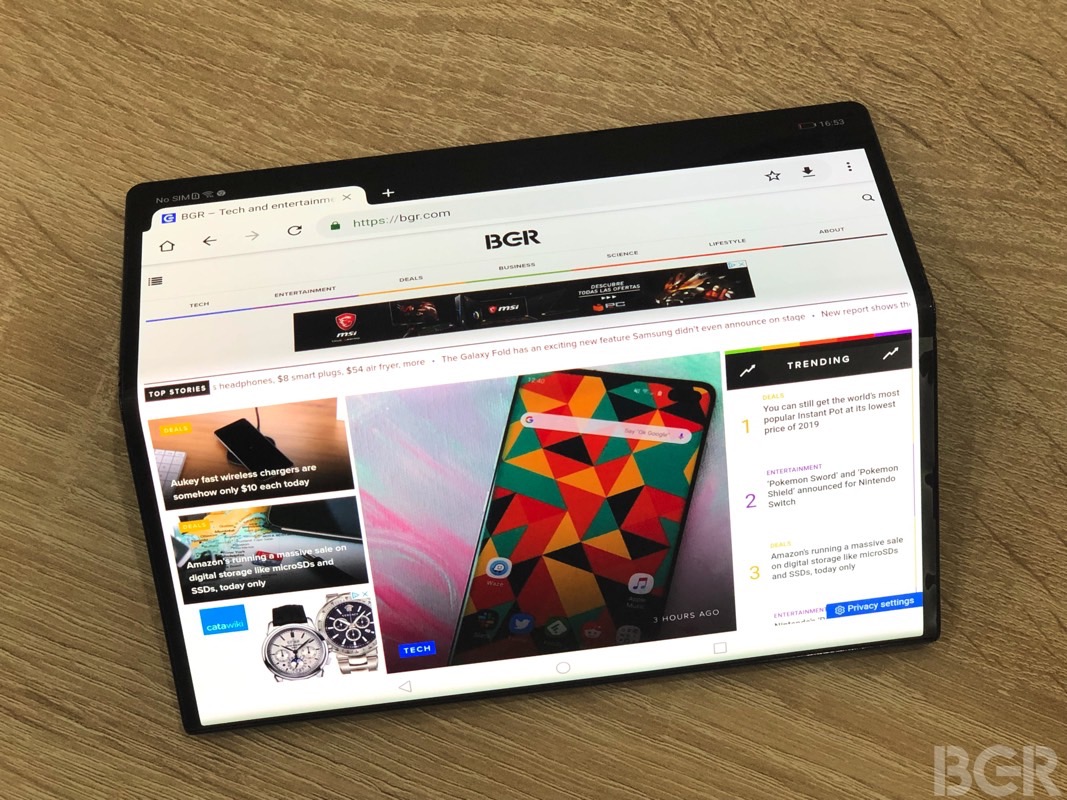
I already knew going into the meeting with Huawei execs that the phone is incredibly thin. But I had no idea how thin it would feel in real life usage, hinge mechanism included. It's also very light and comfortable to hold, but it still feels nice and sturdy.
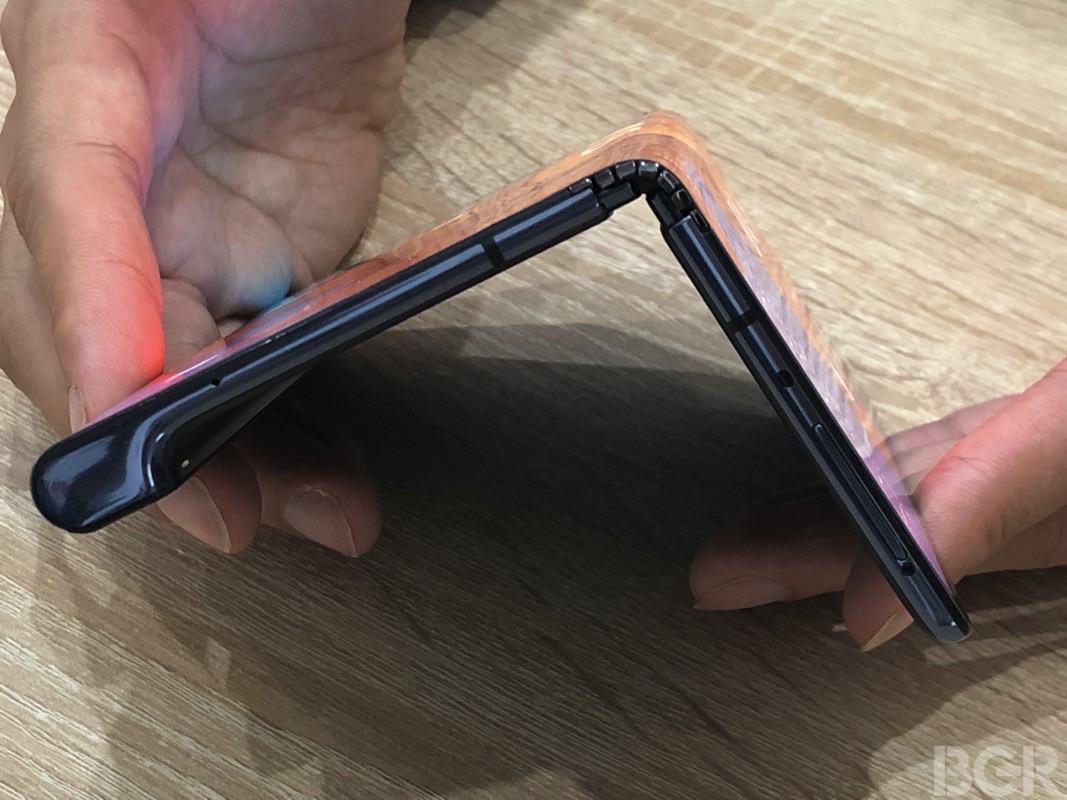
What's not immediately clear from any photo or videos showing the foldable phone is that the handset stays precisely in the position you set it in. If you want it in tablet mode, it remains flat like a tablet. At no point while holding it did I feel like the hinge would move on its own.

If you want it in tent mode, the hinge keeps it in tent mode. And when you need to pocket it, there's a mechanism that locks the screen preventing it from unfolding. You'll have to press a button to release the display before you can fold it.
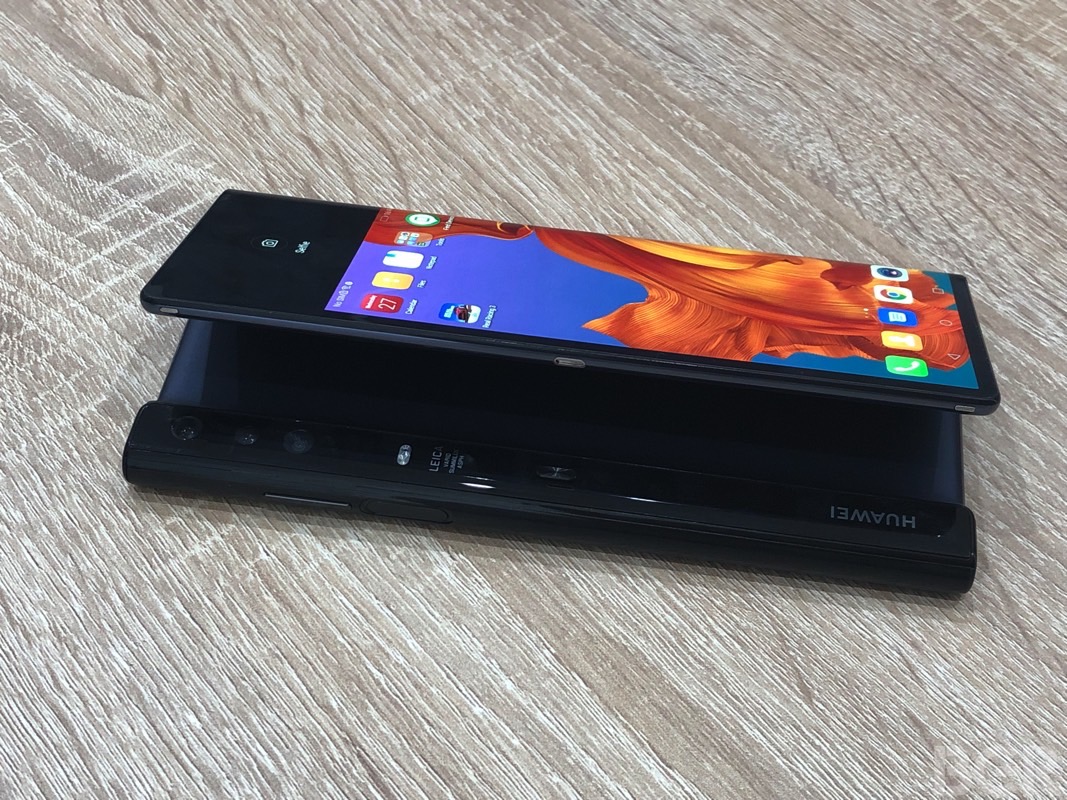
We weren't allowed to fold the screen during our experience with the device, and a Huawei exec actually did all of the folding for us. It was a bit odd, but the unit was obviously a pre-release model.
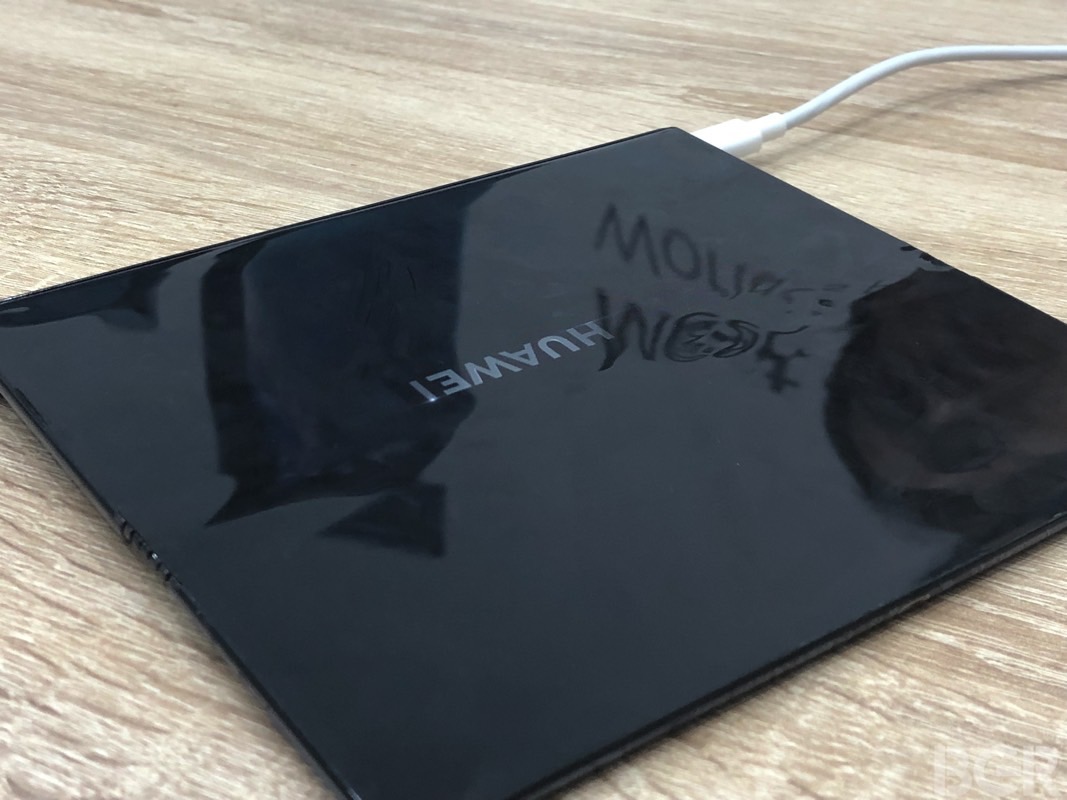
Depending on how you hold it, you can see a line of sorts that runs down the middle of the screen where the fold is. That's probably something we'll have to expect from any phone that folds right now whether it's glass or plastic. It's not a crease, however, as you can see in the image above. And no, your fingers won't feel any lines or bumps when you're touching the display.
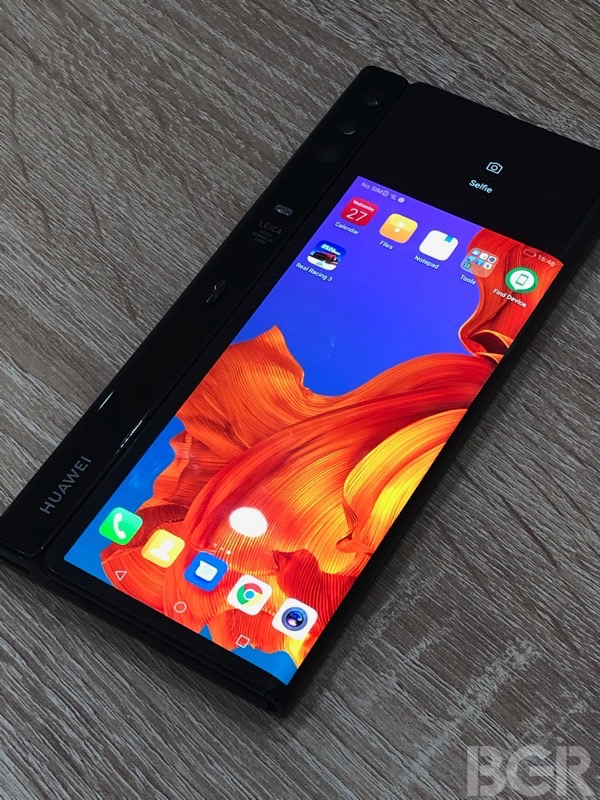
I did feel uneasy working the tablet for two reasons. First of all, I wasn't allowed to fold or unfold it so that prevented me from testing its primary feature. You'll definitely want to fold it as soon as you touch it. Then, while I was using the camera, I tried to switch from the main camera to the selfie cam and nothing happened. That's because you have to fold the phone closed to take a selfie — that camera flip button needs to be nixed from the Mate X's camera app, by the way.
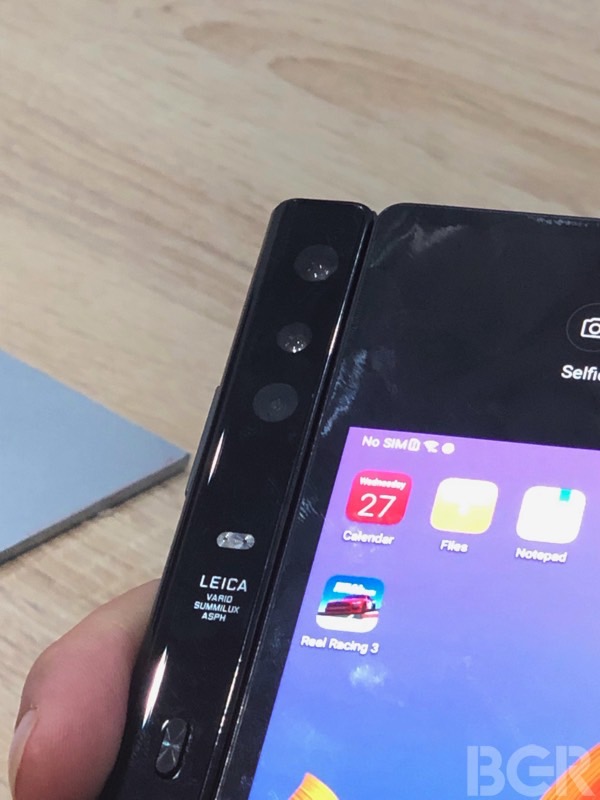
The advantage here is that you'll use the same camera tech both for selfies and regular photos. Huawei would not tell us whether the camera performance tech will match the Mate 20 Pro, or whether we're in for a P30 Pro-like experience. The P30 Pro is the next-gen smartphone that will be released by Huawei in about a month in Paris, and it's expected to feature new camera tricks and improved quality.
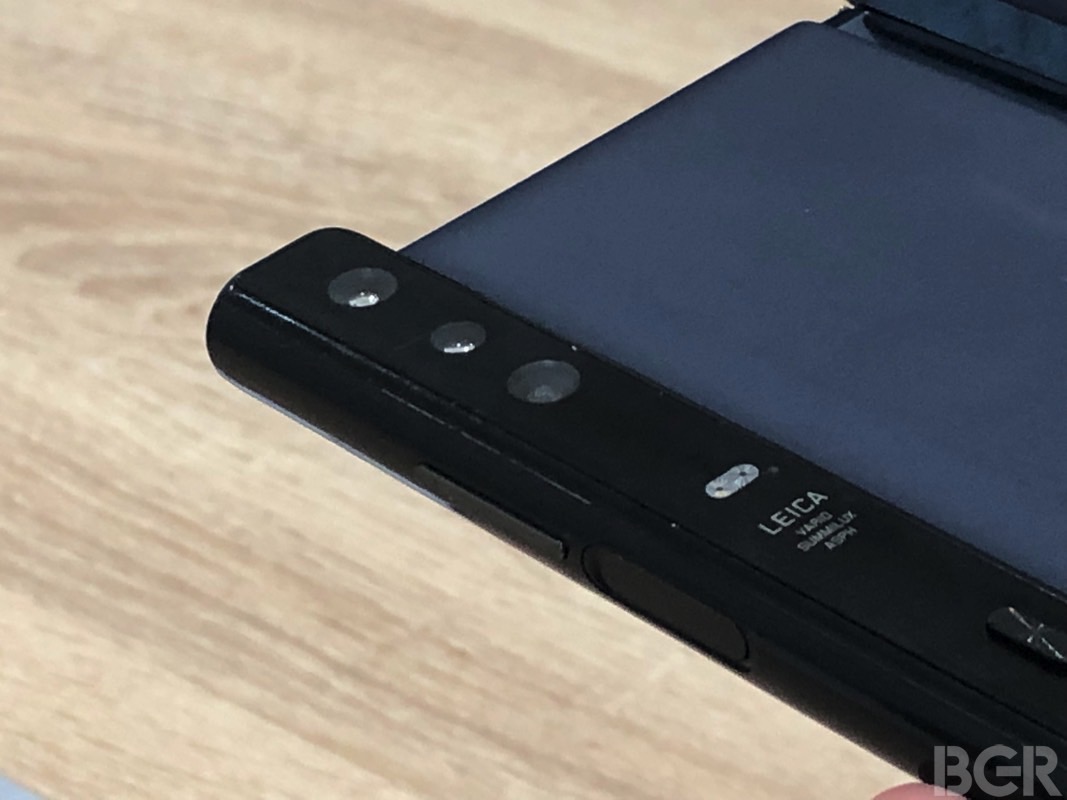
Foldable screens will definitely change how you take photos. You'll be able to see yourself on a smaller screen while shooting selfies, just like on any other phone. But now, thanks to the dual-screen mode, subjects will get a live preview of the photo as you're snapping it.

One other thing I was able to check out during my brief hands-on time with the Mate X was battery charging. Having been shown around for a full day, the phone was briefly plugged in when I arrived and it eventually ran out of battery. But it turned on instantly after being plugged in, which gave it enough juice so we could continue taking photos of it in multiple poses. The Mate X packs a 4,500 mAh battery and comes with a 55W USB-C charger. Huawei's SuperCharge will recharge the phone up to 85% in just 30 minutes.

The Mate X is a 5G device and while we didn't test it, 5G will consume more power than 4G. But that ultra-fast charging speed should come in handy once dependable coverage is available.
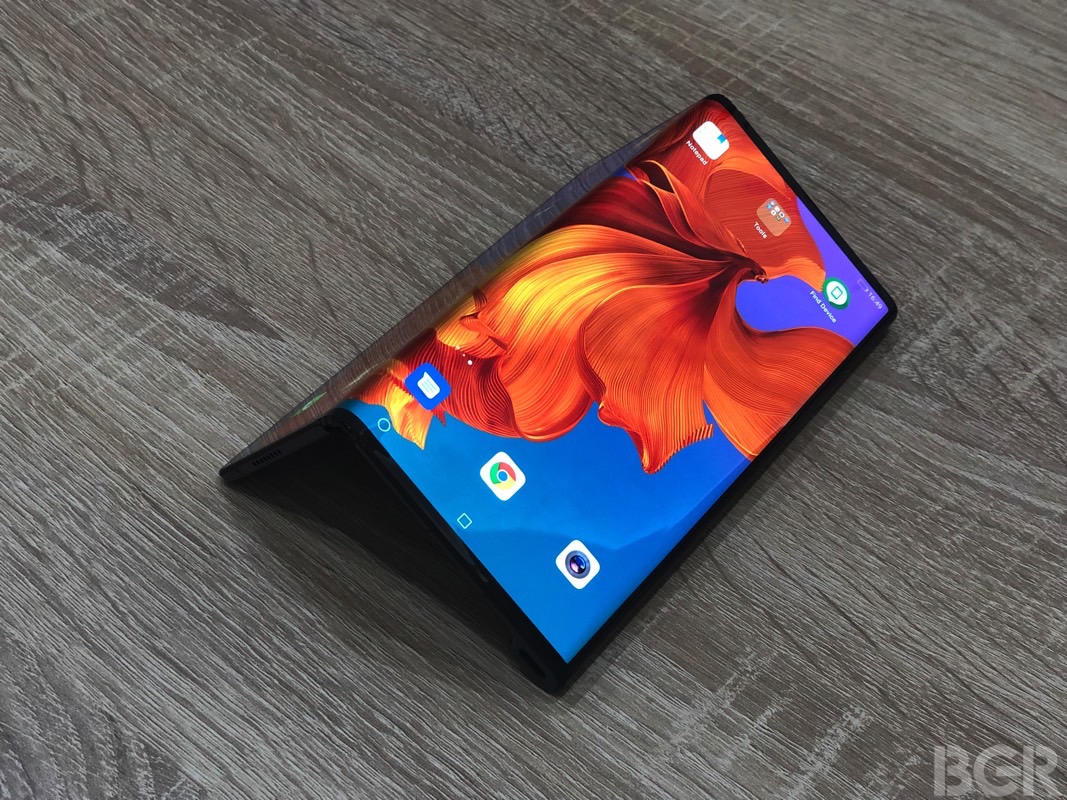
Previews can never tell the whole story with the Huawei Mate X. We'll have to wait for the final version to come out to see how it is with real-world usage. Huawei says the hinge mechanism and screen are durable, and that a special screen protector will protect it from scratches. That doesn't change the fact that the Mate X will be an expensive device that wears a huge screen on the outside. Samsung said at the show there's a good reason why its Galaxy Fold folds inwards, and that's because the main screen is better protected.
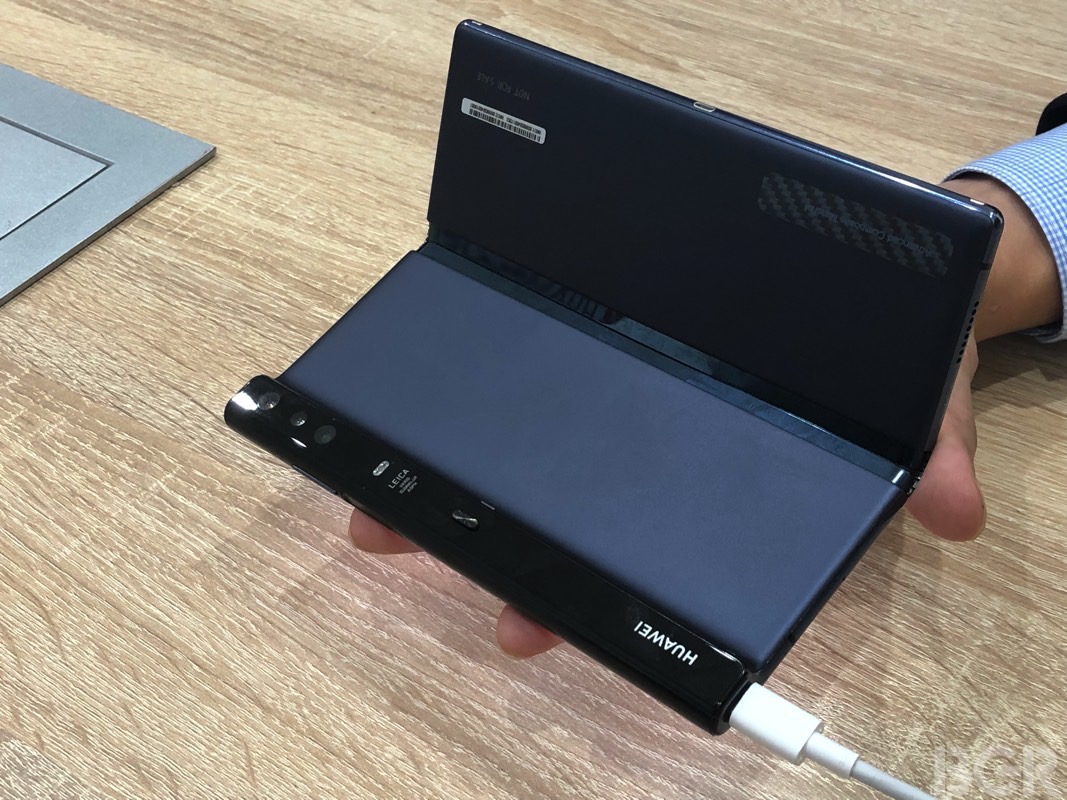
Also, there's a matter of software. The phone does pack the latest Kirin 980 7nm processor, the same one that's in the Mate 20 Pro, and it seems to run everything pretty smoothly. The software was quick to adjust from tablet mode to phone mode, but I need more time with it, as well as the ability to fold and unfold the Mate X myself. Not to mention that we're going to need actual mobile software experiences to make foldable devices really compelling. And that means we'll need Google's Android OS and third-party apps to be optimized for foldable phones, regardless of what Huawei does with EMUI that's on top of it.
